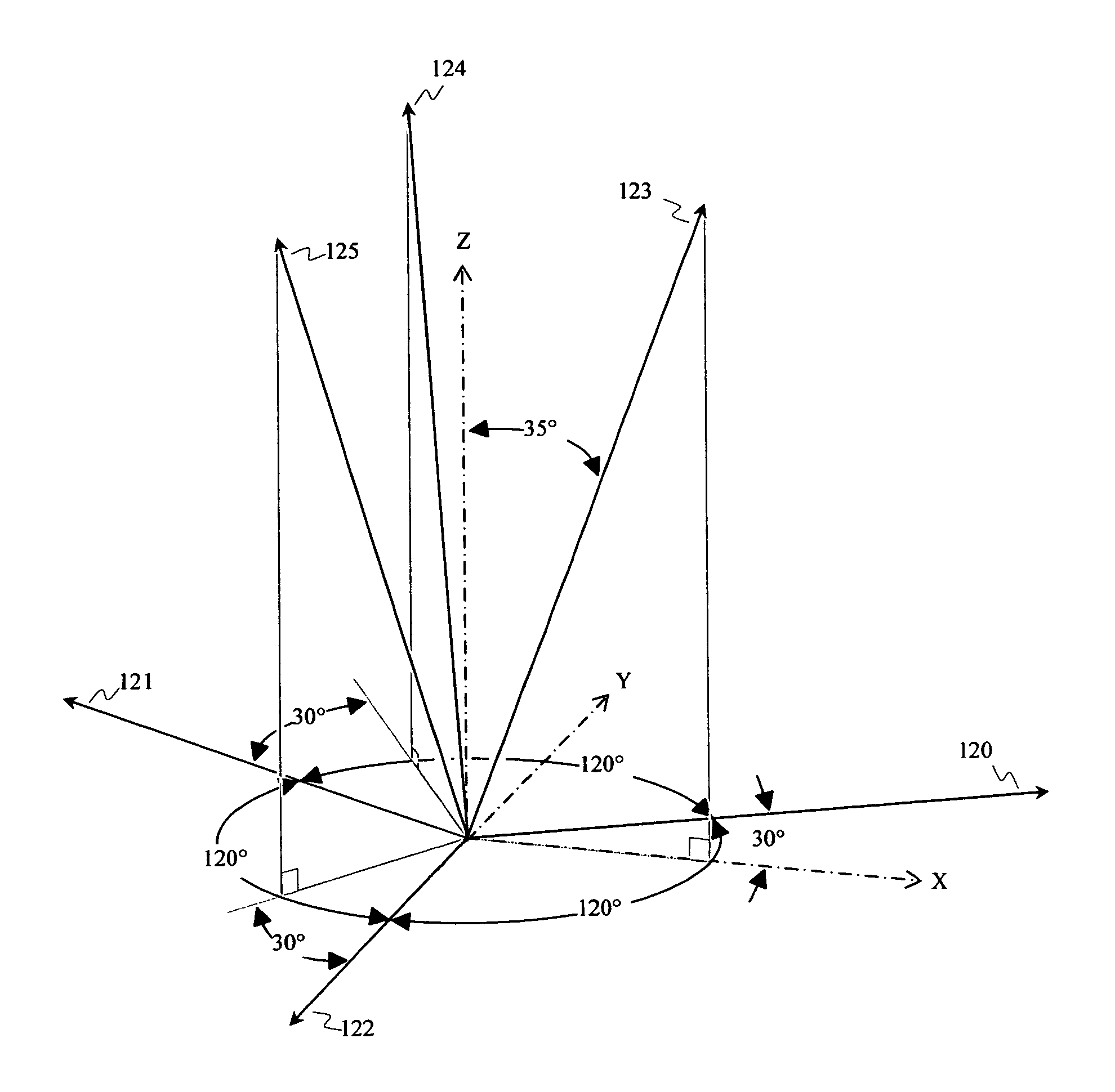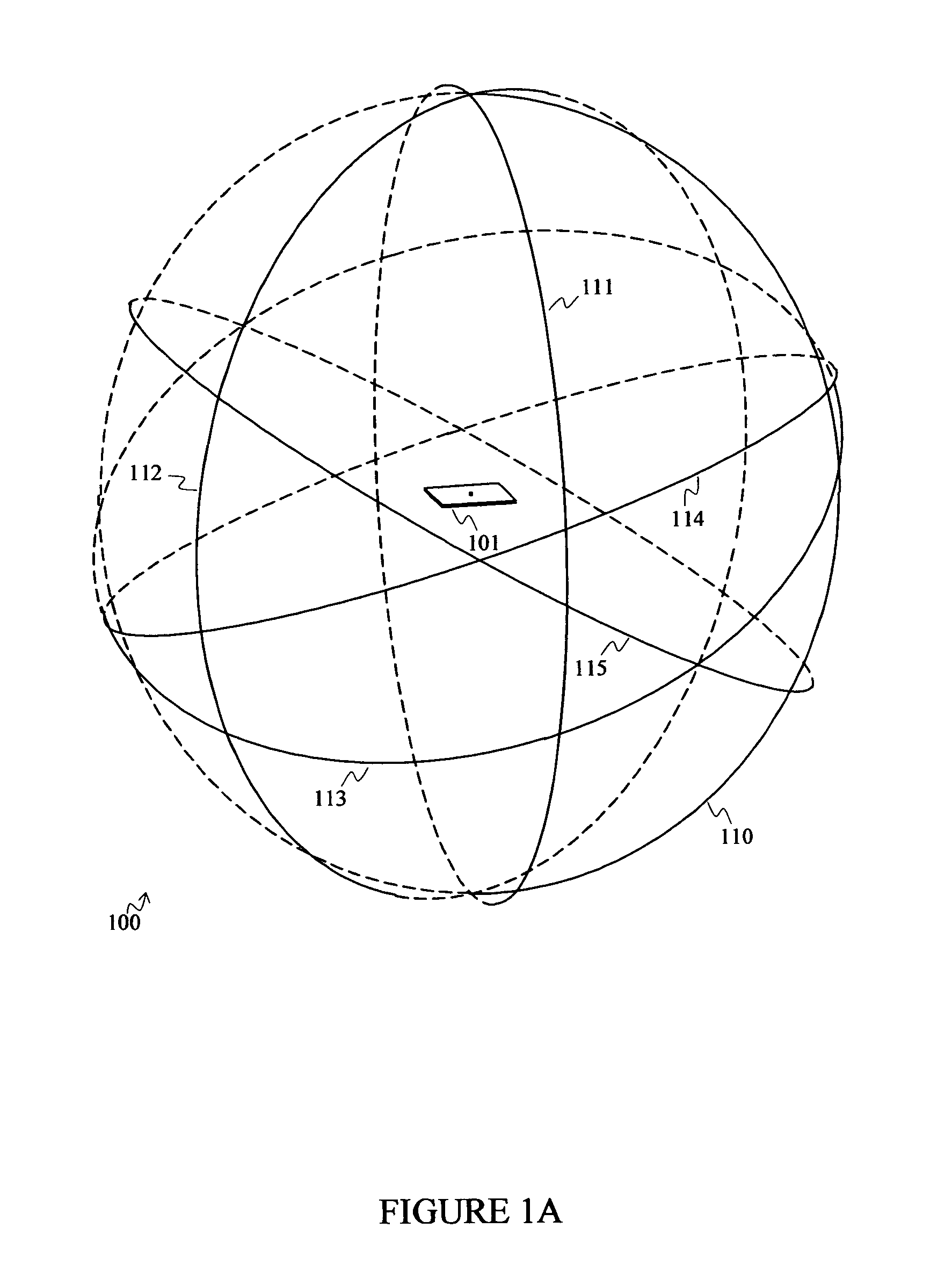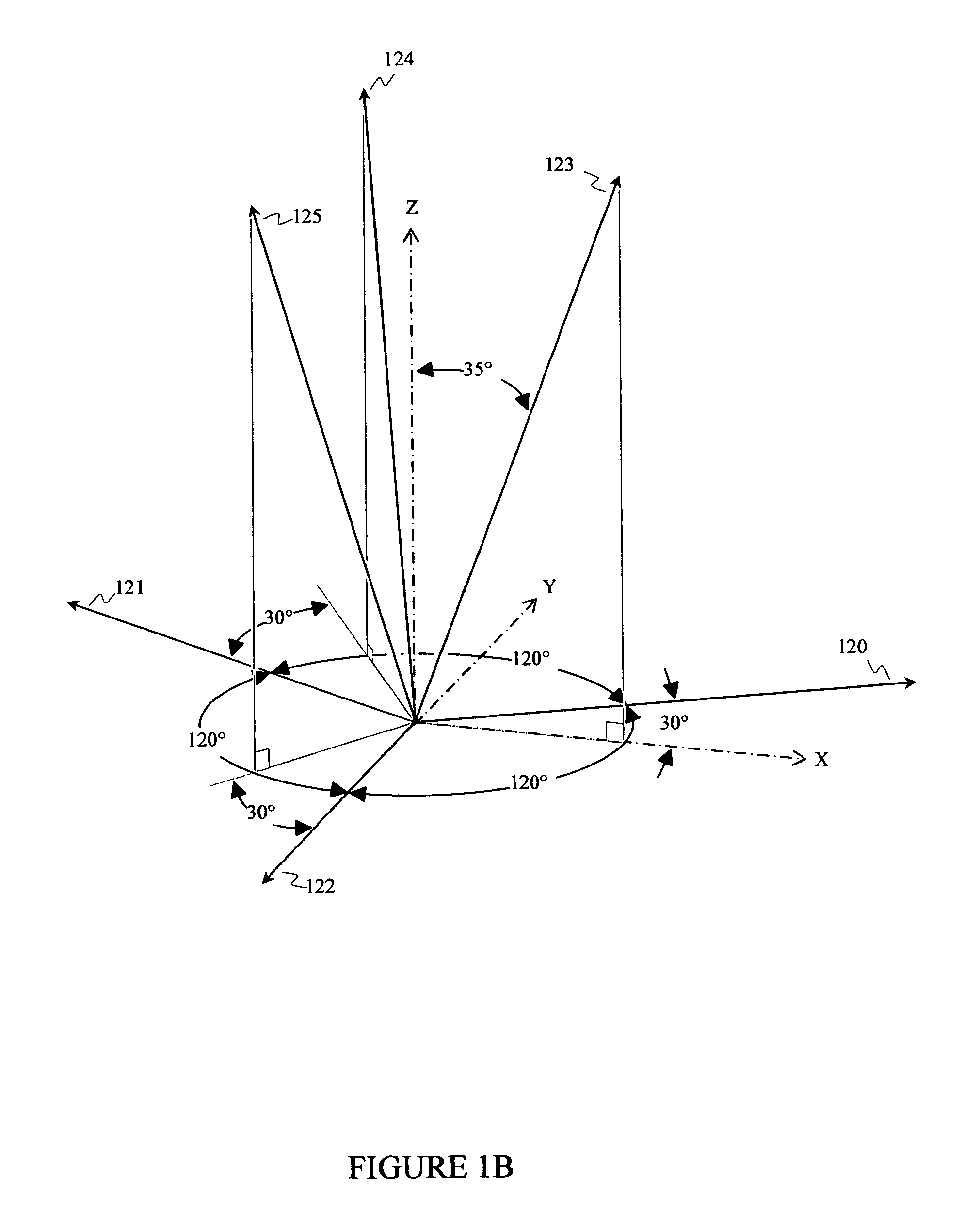Synthetic opal and photonic crystal
a technology of photonic crystals and synthetic opals, applied in the field of photonics and microfabrication, can solve the problems of changing the stability of electrolyte and appropriate adjustments, and achieve the effects of high melting point, low vapor pressure and high vapor pressure material
- Summary
- Abstract
- Description
- Claims
- Application Information
AI Technical Summary
Benefits of technology
Problems solved by technology
Method used
Image
Examples
Embodiment Construction
[0021]Embodiments of the present invention and their advantages are best understood by referring to FIGS. 1 through 3 of the drawings, in which like numerals refer to like parts.
[0022]FIG. 1A is a diagram illustrating a perspective view of self-assembly cell 100. FIG. 1B is a perspective diagram indicating the axes of self-assembly cell 100. Self-assembly cell 100 has six yoke electromagnets 110 through 115 oriented along axes 120 through 125 to apply a magnetic force corresponding to the vector addition of the applied fields. Axes 120 through 125 correspond to the well-known crystallographic axes of an opal structure. The direction of the magnetic field is electrically modulated between electromagnets 110 through 115. Alternatively, a single electromagnet may be used and mechanically rotated to the desired direction. Sample 101 is located at the center of self-assembly cell 100.
[0023]FIG. 2 is a flowchart with diagrams illustrating the side view of an electroplated inverse opal PBG...
PUM
| Property | Measurement | Unit |
|---|---|---|
| area | aaaaa | aaaaa |
| size | aaaaa | aaaaa |
| lattice size | aaaaa | aaaaa |
Abstract
Description
Claims
Application Information
 Login to View More
Login to View More - R&D
- Intellectual Property
- Life Sciences
- Materials
- Tech Scout
- Unparalleled Data Quality
- Higher Quality Content
- 60% Fewer Hallucinations
Browse by: Latest US Patents, China's latest patents, Technical Efficacy Thesaurus, Application Domain, Technology Topic, Popular Technical Reports.
© 2025 PatSnap. All rights reserved.Legal|Privacy policy|Modern Slavery Act Transparency Statement|Sitemap|About US| Contact US: help@patsnap.com



